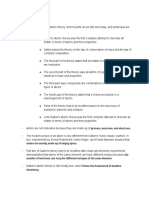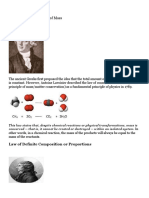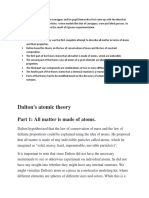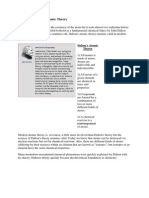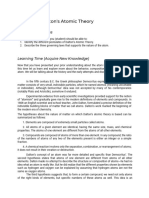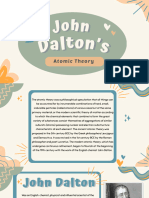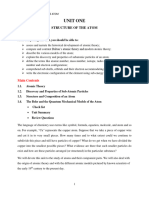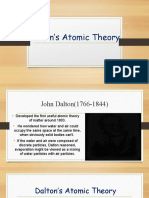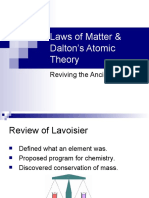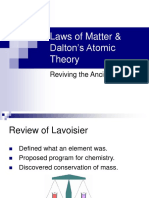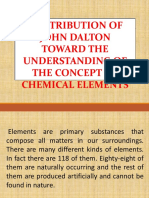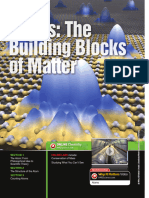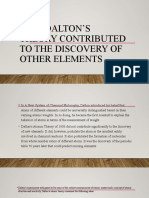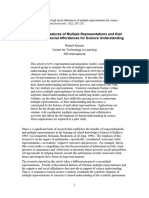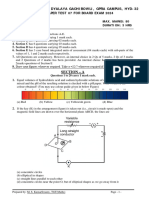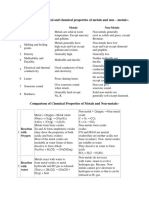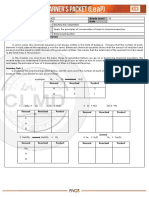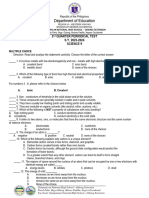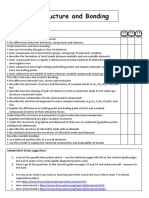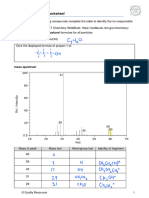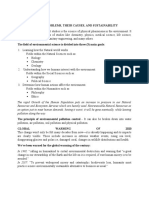0% found this document useful (0 votes)
19 views13 pagesUnit 1 Lect-1
The document outlines Unit 1 on atomic structure and interatomic bonding, covering topics such as the Bohr atomic model, quantum chemistry, and types of bonding. It details Dalton's atomic theory, which includes the laws of conservation of mass and constant composition, and the assumptions that all matter is made of atoms, identical atoms of an element, combinations of different atoms in compounds, and the rearrangement of atoms in chemical reactions. Additionally, it notes the limitations of Dalton's theory due to the discovery of subatomic particles.
Uploaded by
AD PLAYZCopyright
© © All Rights Reserved
We take content rights seriously. If you suspect this is your content, claim it here.
Available Formats
Download as PDF, TXT or read online on Scribd
0% found this document useful (0 votes)
19 views13 pagesUnit 1 Lect-1
The document outlines Unit 1 on atomic structure and interatomic bonding, covering topics such as the Bohr atomic model, quantum chemistry, and types of bonding. It details Dalton's atomic theory, which includes the laws of conservation of mass and constant composition, and the assumptions that all matter is made of atoms, identical atoms of an element, combinations of different atoms in compounds, and the rearrangement of atoms in chemical reactions. Additionally, it notes the limitations of Dalton's theory due to the discovery of subatomic particles.
Uploaded by
AD PLAYZCopyright
© © All Rights Reserved
We take content rights seriously. If you suspect this is your content, claim it here.
Available Formats
Download as PDF, TXT or read online on Scribd
/ 13


